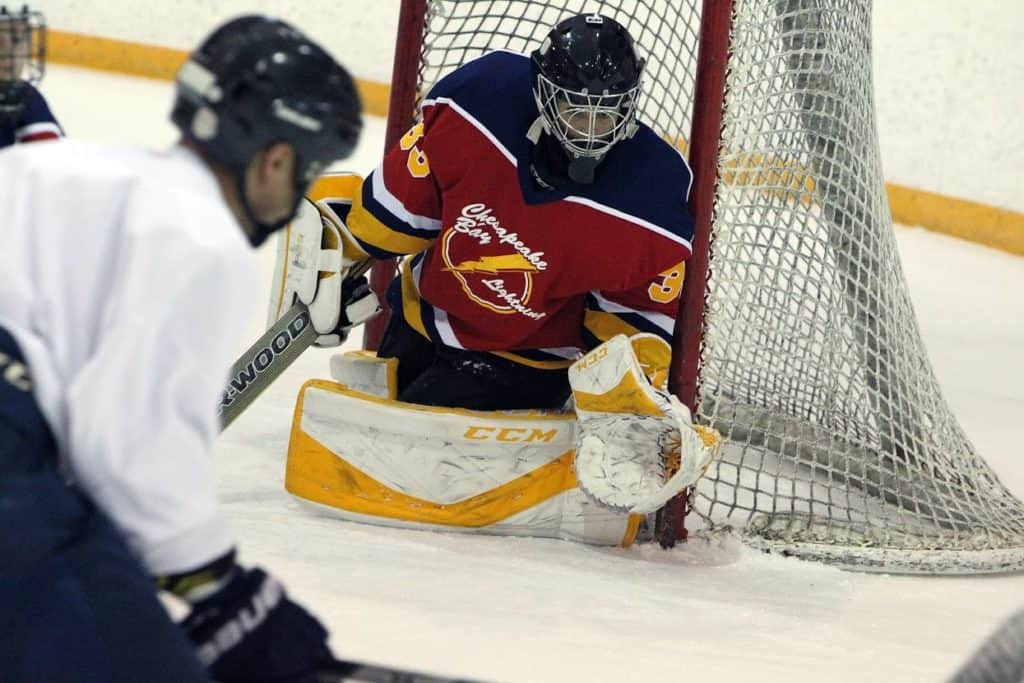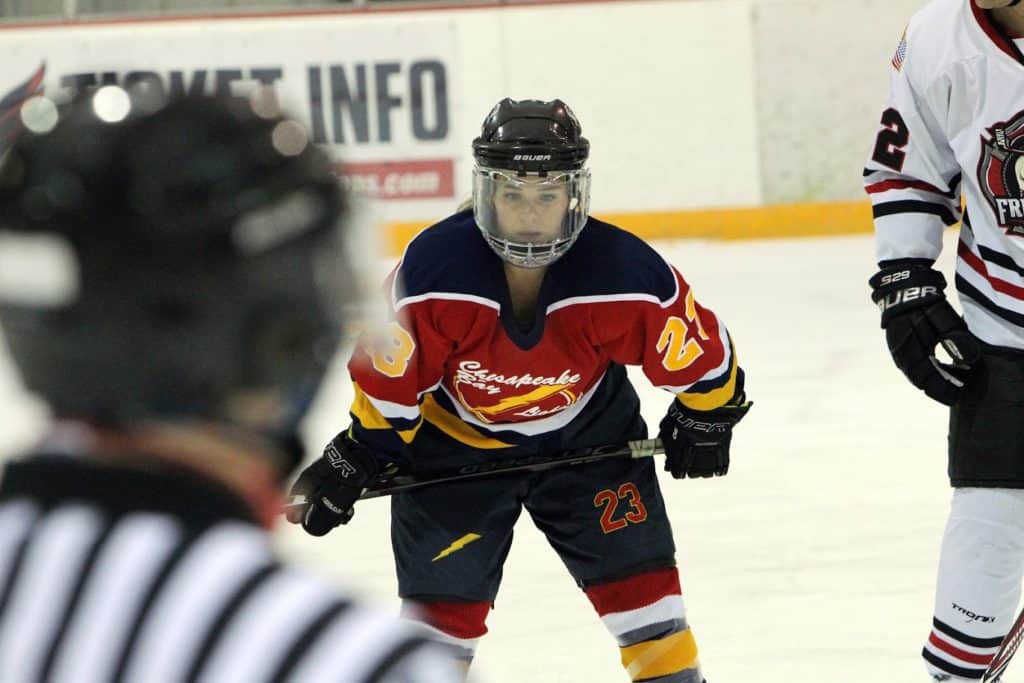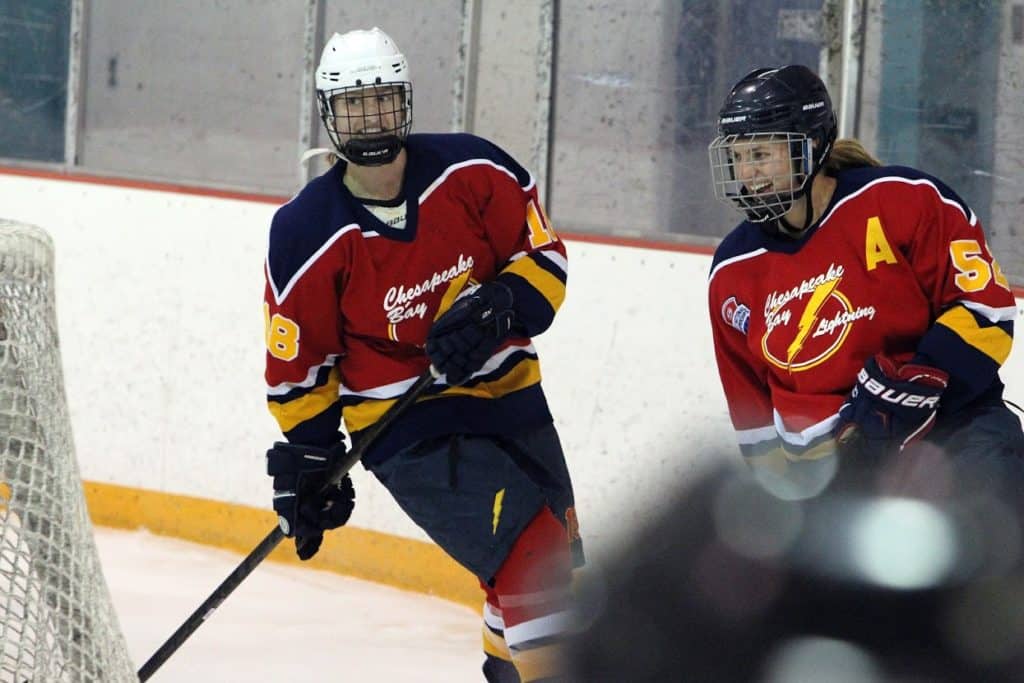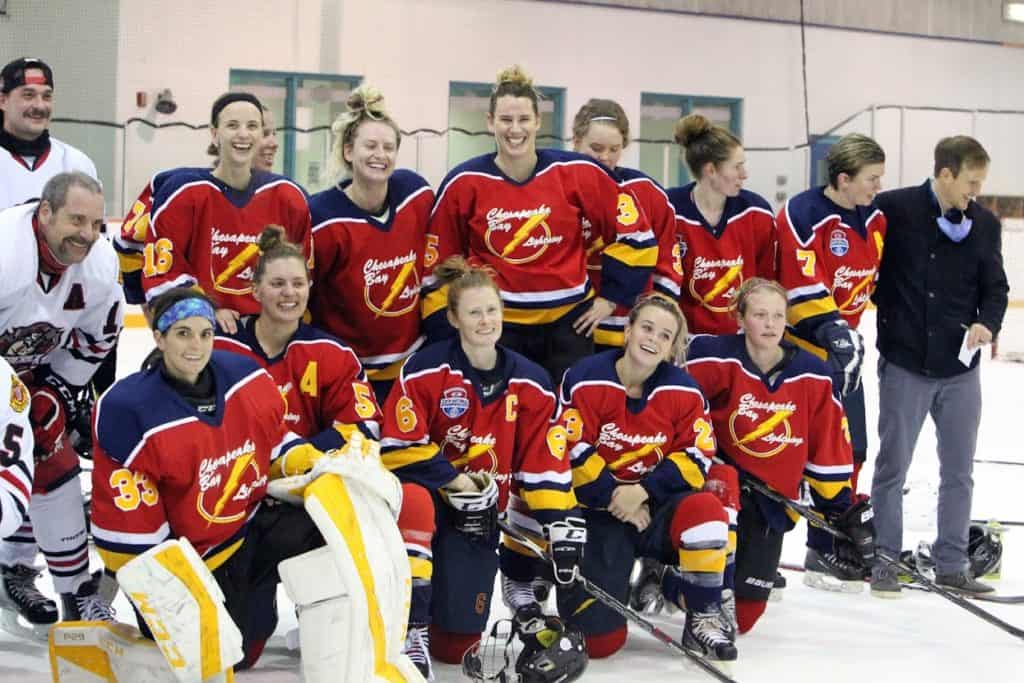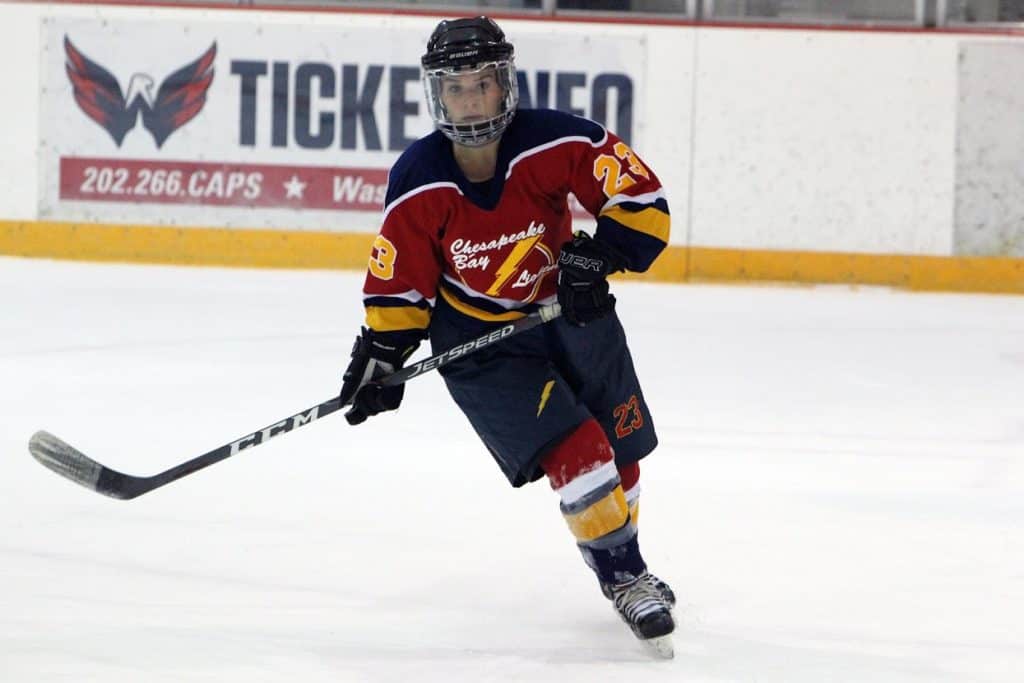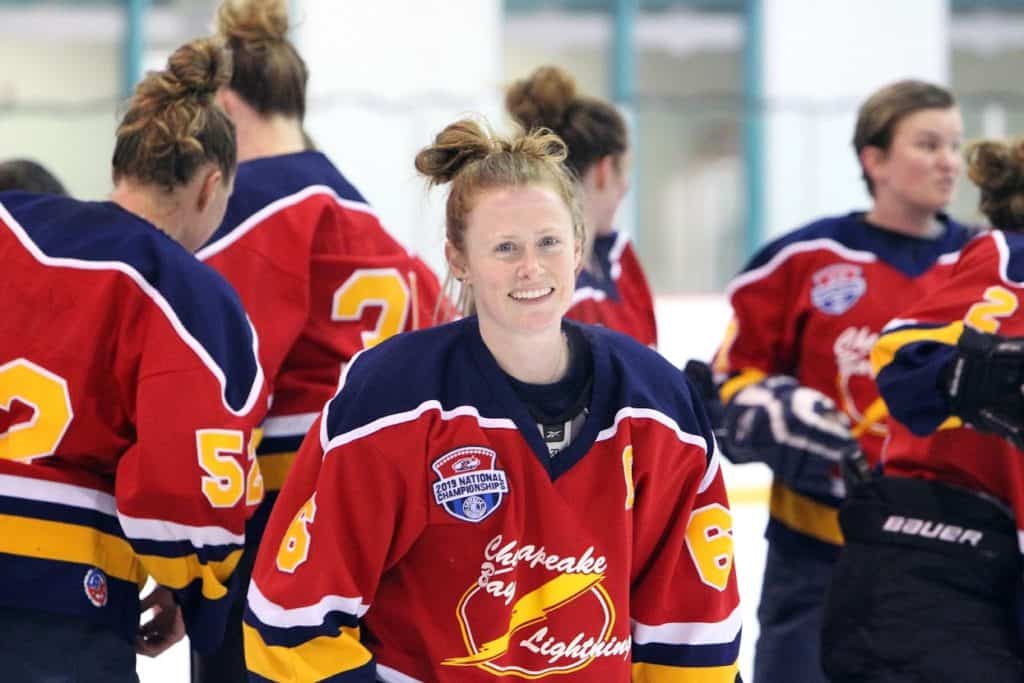Lightning on Ice
Women’s hockey team heads to nationals
By Ian Decker
From one bay to another, the Chesapeake Bay Lightning (CBL) hockey team traveled down the East Coast to compete in the 2021 Adult Women’s National Championships, held in Tampa from April 22–25. While they came close to total victory, winning their first three games in the round-robin tournament, the team fell Saturday to a Detroit team in the semifinals.
While they may not be bringing a national trophy home with them, the team returns with personal victories galore.
Women’s Hockey in Chesapeake Country
Founded in 1993, the Chesapeake Bay Lightning is a semi-professional women’s hockey team with three levels of competition. The highest level is the B-Team, which travels as far as Michigan and Florida for upper-level tournaments. The C- and Rec-Teams both compete in the Mid-Atlantic Women’s Hockey League (MAWHL). With over 70 players registered, CBL is the largest women’s team in the region. The Lightning is based out of the Wheaton Ice Arena and the Gardens Ice House in Laurel.
The Lightning gets its origins from the Washington Wolves, a longer-established D.C. region team. Now competing at the B level—just one step below professional hockey—the team plays more than 25 games during the season, from October to mid-April.
Bay to Bay Fundraiser
The 2,000-kilometer trip to nationals comes after logging 2,451 virtual kilometers in a fundraising effort to help the team pay for the journey.
“It should come as no surprise that ice hockey is a very expensive sport,” said CBL goalie Maxie Weisz, a Bowie native who played Division 1 hockey at St. Lawrence University and is in her first year with the team. “Every piece of equipment is paid out of pocket. When the team made it to nationals, it was going to be a large financial undertaking. By reaching our goal [of 2,000 kilometers], it allows us to be able to pursue hockey at a more competitive level.”
Not only did the Bay to Bay Fundraiser help the Lightning pay for travel down to Tampa and the $1,100 entry fee, but it was also a way to interact with the local community and raise the profile of women’s hockey in the area. The team met their goal of $10,000 just before the trip.
Organizers say fundraising allows the team to pursue higher competition than is available in the area and facing stiffer competition only amplifies women’s hockey, helping develop the program at the next level.
In Search of Ice
When Hilary Murphy, captain and president of CBL, started playing ice hockey 20 years ago, there weren’t many options for girls. Murphy subsequently founded two teams, one at St. John’s College High School in D.C. and the other at Villanova. While remarkable, Murphy’s is a story all too familiar for those looking to lace up their skates and hit the ice.
“Growing up, there were not many girls’ teams in the area, and it was even rare to see a girl playing on a boys’ team,” says left wing Shannon Rice, who grew up as a “rink rat” in Laurel and played Division III at Saint Michael’s College in Colchester, Vt.
“Being the only girl, I had to bring my A-game every skate, or I risked embarrassment, judgment or getting cut,” Rice said. “More and more girls are going on to play college hockey and beyond. This is awesome for the sport of hockey itself but also allows and encourages girls to become great at something they love.”
Despite facing obstacles at every level, many continue to seek opportunities to play. “Being a female hockey player comes with some stigma,” said Emily Burton, who grew up in Baltimore City, where she learned how to skate at age 7 and got hooked on hockey, “but I take pride in challenging people’s perspectives or expectations. It’s always fun to demonstrate how strong and capable women are and to do it in an arena that is made out to be somewhat masculine.”
Having been around hockey in Maryland for the past 20 years, Murphy has seen the sport flourish. “It’s truly amazing just how much hockey has grown as a female sport in this area,” she said. “We don’t get paid to play, but we show up to all the games. It just shows how far women’s hockey has come and how much respect it has gained through the years.”
Growth of the Game
The potential for the growth of women’s hockey is “limitless,” says Burton. With the NWHL streaming on NBC Sports and the U.S. Women’s National Team winning gold at the 2019 World Championship, women’s hockey is set to take off.
As a kid, Murphy was never able to watch professional women’s hockey, televised or in person. But young girls now can view a women’s hockey broadcast. With the NWHL and National Team gaining popularity, female players have role models to inspire them and promote a path to follow. “It’s really neat as an adult to see just how far this sport has come,” Murphy said. “And it’s not going anywhere. It’s only getting stronger.”
Despite progress, there’s still ample room for advancement—better coaching, accessibility for low-income families, livable and equitable salaries and experienced referees are key. Improvement can’t just be in the youth setup, say advocates, but by creating more opportunities at higher levels, young girls can envision a concrete path to playing hockey after college.
Since joining CBL in 2019, goalie Maria Powell of Annapolis is in awe of the drive of female hockey players to find ways to fight for their sport despite limited outlets in adulthood. “Just seeing the growth of the girls’ team is incredible,” she said. “It’s great to see it grow. Especially going down to Florida and having 10 different teams down there that we’ll be playing against. It’s amazing to be part of that growth.”

